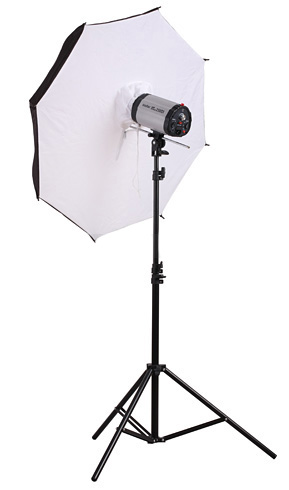What are softboxes
How is the lighting of a photo formed
It is important to understand that photography is a creative process. But there are general principles of lighting formation and understanding them makes it easier to achieve the intended effect. And at the same time determines the inventory necessary for filming.
 |
A fill light is installed behind the photographer (or camera). Its purpose is to balance the light-shadow pattern. Also, the filling light removes deep shadows on the portrait. At a distance of 1.5 metres from the model, just above the head, at an angle of 45 degrees to the camera, there is a drawing light. His task is to identify the shape of the object of the shooting. The accent light is designed to separate the shooting object from the background. It is installed in the same place as the drawing, behind the model at an angle of 50 degrees. Background light is also used, which creates a space by illuminating the background of the photo.
The light sources for photography are lamps and flashes, which are supplemented with special nozzles.
The main lighting accessories and softbox are among them
Softbox. The name itself determines the nature of the accessory — softening (soft) box (box). Naturally, we are talking about light. The softbox is used to create a directional diffused light stream without glare, which is inevitable when using an open flash or a constant light source. The accessory consists of a housing, it can be a folding frame or a rigid plastic or even metal structure, the inner walls of which often have reflective properties. The front part of the softbox is equipped with a screen — diffuser, which just diffuses and softens the light.
Umbrella. Unlike a softbox, it not only passes an impulse through itself, but also reflects it. Due to the use of coloured coatings on the inner surface, umbrellas also form the lighting temperature and even create artistic effects.
Reflector (reflector). Unlike the two previous accessories, this one is not a nozzle, but its purpose is similar — to soften and direct the luminous flux. Structurally, it is a flexible frame with a fabric stretched in it, usually white, silver or gold.
The most common lighting accessories are softboxes, they are used by almost every professional photographer. Why? It's all about versatility. Softboxes are suitable for any type of shooting (subject, fashion, portrait, interior) and can serve both as the main light source and for filling.
Softboxes and their applications
According to the shape, there are square, rectangular and octagonal softboxes (octoboxes).
Octoboxes are often used for portrait photography, they are very common on shoots for glossy magazines. In such softboxes, photographers are captivated by the ability to create volume in small details of fashion design.
Rectangular softboxes are universal — they are suitable for both portrait and subject photography. Unless it is important to understand that the area and "softness" of lighting by a specific softbox depends on its dimensions, the density of the diffuser and the power of the light source.
The sizes of softboxes are presented in a very wide range — from very small ones, focused on installing a camera flash, to huge studio ones, human-sized.
It is also worth highlighting softboxes with removable reflective walls and narrow softboxes (stripboxes). The former, being mounted on rods in combination with constant light sources, perfectly cope with increasing the overall level of illumination of the scene, while maintaining the illusion of natural lighting. Narrow softboxes are equipped with removable masks that narrow the scattering surface to a narrow strip. They serve to create the effect of "slit" lighting.
What to pay attention to when choosing a softbox
Choosing a softbox, you need to proceed from the nature of the planned filming. They will determine the shape and dimensions of the accessory.
Calculating the size, it is worth considering that a rectangular softbox with sides of 60 x 80 cm will cope well with face lighting, whereas a large softbox of 100 x 100 cm will work full-length lighting of a person. If you periodically work on the road, an important factor will be its compactness when folded and ease of assembly and disassembly (you can't take a metal softbox to nature with you). If the softbox allows you to dismantle the walls and fix an additional layer of the diffuser, this is also a plus.
The brand and price of a softbox often determine its quality. Professionals who really understand light pay great attention to the fabric of the diffuser — ideally, it should provide absolutely uniform illumination, without obvious light and dark zones. And it is not necessary to count on the use of expensive materials in unnamed Chinese products. Of the really reliable brands, it is worth highlighting: BRONCOLOR, PROFOTO, ELINCHROM, HENSEL, MULTIBLITZ, BOWENS, REKAM, PROGRAF, MARCO, PHOTOFLEX and LASTOLITE.
